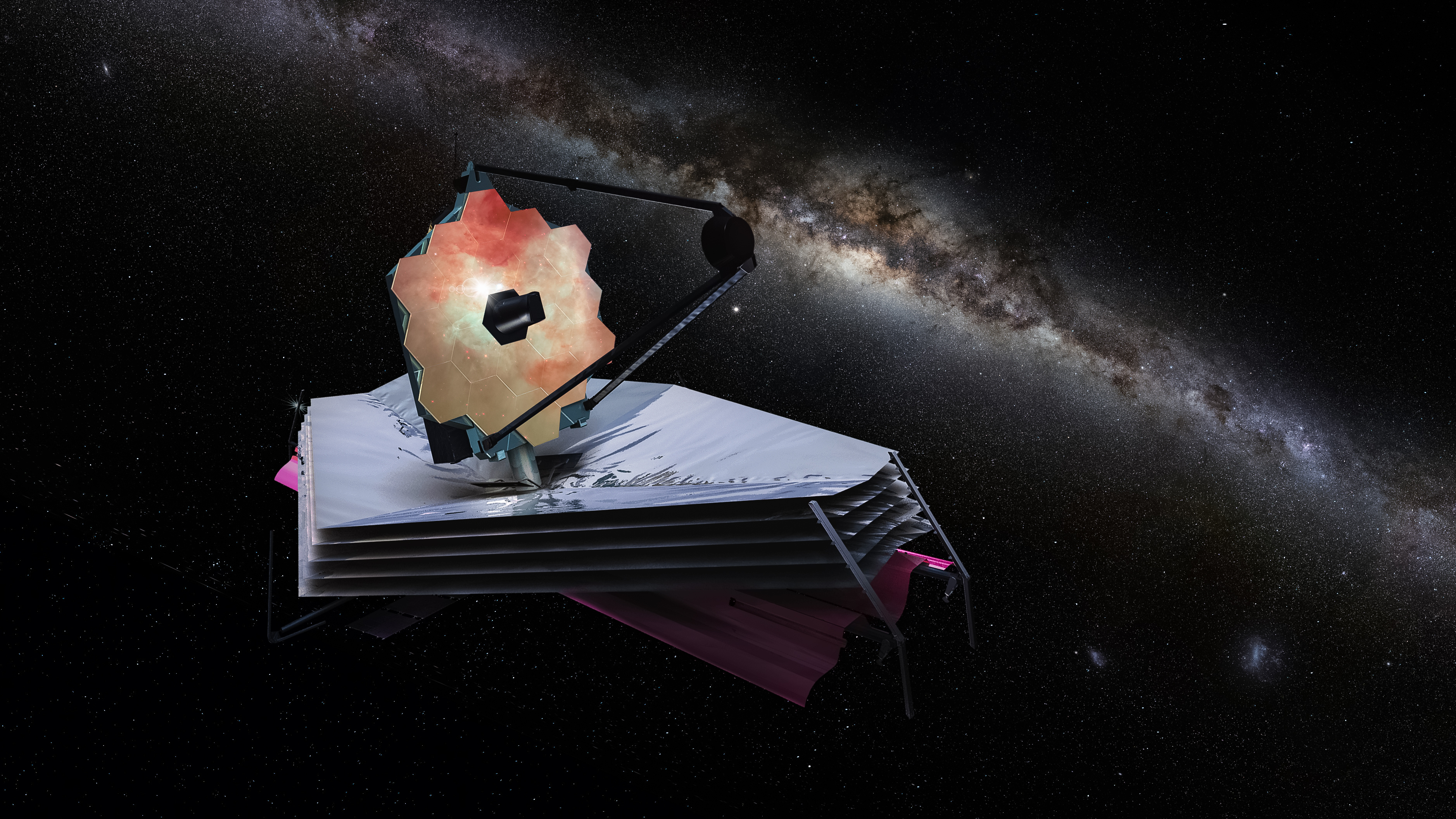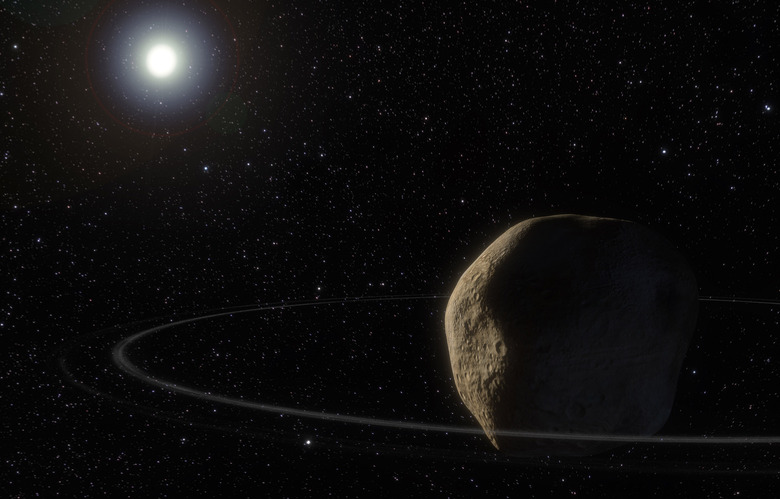James Webb Found Water Ice In The Rings Of An Asteroid
Originally discovered in 1997, the asteroid Chariklo is too far away for any of our current space telescopes to properly observe it or take images of it. However, NASA says recent "lucky" observations by James Webb have revealed that the spectacular rings surrounding this asteroid are home to water ice, marking an exceptional discovery for astronomers.
The discovery of this intriguing asteroid was quite a big deal back in 1997, but it wasn't until 2013 that astronomers discovered rings surrounding the small asteroid. This made it the first asteroid with a ringed system that we had ever discovered. However, because of its distance, we had a hard time directly observing it in detail, which is why we haven't discovered this water ice sooner.
Because Webb is so powerful, astronomers were able to use the telescope to inspect the asteroid during a phenomenon known as occultation – when a star or planet moves behind another. In this instance, a star moved behind Chariklo, allowing scientists to analyze what the rings of the asteroid are made of. By doing this, they discovered that those rings contained water ice crystals.

From there, astronomers used Webb's various instruments to further analyze the asteroid. By doing so, they discovered that the rings of the asteroid are home to crystallized water ice. And, based on the amount of water ice crystallization believed to exist in those rings, astronomers say the asteroid is constantly being bombarded by space dust and micrometeoroids.
These bands of water ice on the asteroid's rings were clearly visible by looking at how the light from the star had traveled behind Chariklo. Further, scientists believe that future observations of the asteroid could help us pinpoint exactly how big the rings are, and how they surround the asteroid itself. Until then, though, all we have to go off of are artists' interpretations of the discovery.
At just 188 miles in diameter, Chariklo orbits between Saturn and Uranus, well into our outer solar system. While too far away to image with Webb's current hardware, the discovery of water ice on the asteroid's rings is sure to draw even more eyes that way, and hopefully lead to future NASA telescopes being able to image things that far away.
We've also found water ice in other places throughout our solar system, including deposits of water ice on Mars.
